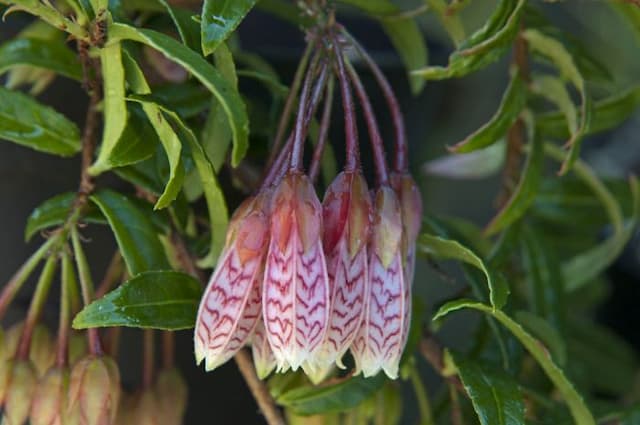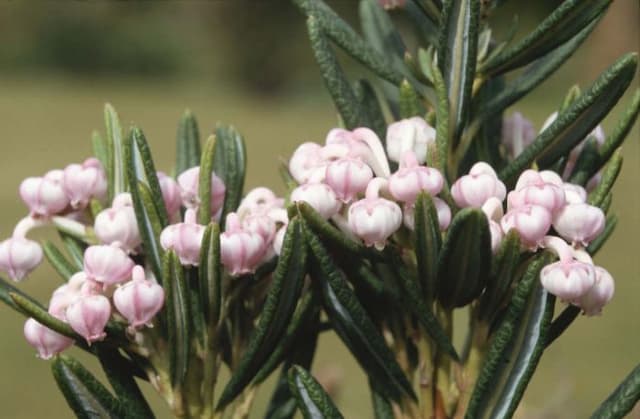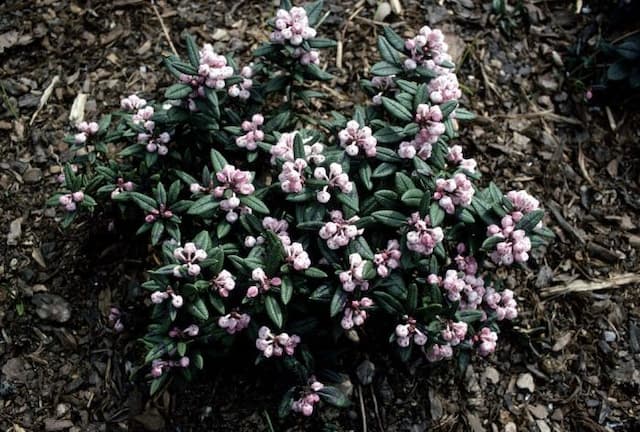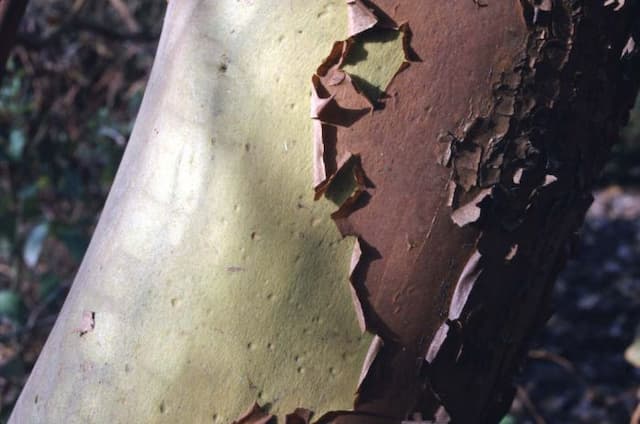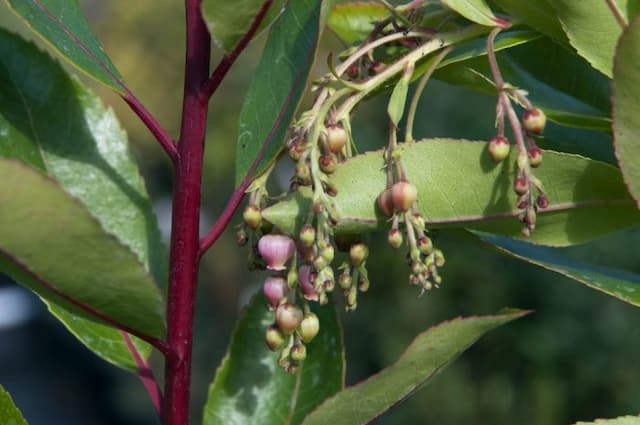Winter heath Erica carnea f. aureifolia 'January Sun'

ABOUT
The plant referred to as 'January Sun' is a vibrant evergreen shrub known for its striking foliage and blossoms. This particular variety sports foliage in a golden-yellow hue, which adds a splash of brightness to gardens even during the winter months. As the seasons change, the leaves may take on a more lime-green color, providing visual interest throughout the year. During the flowering period, 'January Sun' is adorned with an abundance of bell-shaped flowers. These blooms exhibit a soft pink to rose color, making a beautiful contrast against the golden foliage. The flowers are arranged in clusters that gracefully cover the shrub, creating a dense and colorful display. Overall, the appearance of 'January Sun' is characterized by its colorful foliage and profuse, vibrant blooms. This shrub can be a cheerful and eye-catching addition to a variety of garden settings, bringing color and life to the landscape when many other plants are dormant.
About this plant
 Names
NamesFamily
Ericaceae.
Synonyms
Winter Heath, Alpine Heath, January Gold.
Common names
Erica carnea f. aureifolia 'January Sun'.
 Toxicity
ToxicityTo humans
Winter heath is generally considered non-toxic to humans. There is no widespread documentation of toxicity or symptoms associated with the ingestion of this plant by humans.
To pets
Winter heath is also generally recognized as non-toxic to pets. It is not known to cause poisoning in animals and there are no reported symptoms from ingestion of this plant by pets.
 Characteristics
CharacteristicsLife cycle
Perennials
Foliage type
Evergreen
Color of leaves
Green
Flower color
Pink
Height
1 foot [30 cm]
Spread
2 feet [60 cm]
Plant type
Shrub
Hardiness zones
5
Native area
Europe
Benefits
 General Benefits
General Benefits- Winter Interest: Erica carnea 'January Sun' blooms in the winter, offering vibrant flowers during a season when most other plants are dormant.
- Drought Tolerance: Once established, it is quite tolerant to dry conditions, requiring minimal irrigation.
- Low Maintenance: This plant requires very little pruning or other care once it is established in an appropriate location.
- Erosion Control: The rooting pattern and ground cover nature of the plant help to stabilize soil and prevent erosion.
- Wildlife Habitat: It provides food and shelter for various insects, including bees, during the winter months when resources are scarce.
- Year-Round Foliage: The plant retains its foliage throughout the year, maintaining garden interest even when not in bloom.
- Versatile Landscaping: Suitable for rock gardens, borders, ground cover, and container gardening, offering a range of uses in the garden.
 Medical Properties
Medical PropertiesThis plant is not used for medical purposes.
 Air-purifying Qualities
Air-purifying QualitiesThis plant is not specifically known for air purifying qualities.
 Other Uses
Other Uses- The Winter Heath can be used in miniature gardening as it maintains a small size, adding a touch of greenery to tiny landscapes.
- With its capability to withstand cold weather, the plant can be employed in frost-themed floral arrangements or as part of winter gardens.
- The bright foliage of Erica carnea 'January Sun' adds visual interest to rock gardens, complementing the stony textures with its golden hues.
- Due to its dense growth habit, it can serve as a living mulch, suppressing weeds and retaining soil moisture in garden beds.
- The plant's resistance to deer browsing makes it a suitable choice for gardens in areas with high deer populations, adding year-round color without the risk of damage.
- This Winter Heath variety can be used in sensory gardens, as its foliage provides a visual contrast against darker greens and its texture can be enjoyed up close.
- As an evergreen, Erica carnea 'January Sun' can be utilized in holiday decor, providing a natural and festive element in wreaths and outdoor displays.
- The plant is appropriate for bonsai creation, with careful pruning enabling the miniature tree-like form to be maintained.
- The Winter Heath's tolerance of trimming can allow for its use as a topiary specimen in formal gardens, creating shapes and structures with its foliage.
- These plants can act as indicators of soil pH, with their growth vigor and foliage color potentially reflecting the soil conditions in the garden.
Interesting Facts
 Feng Shui
Feng ShuiWinter heath is not used in Feng Shui practice.
 Zodiac Sign Compitability
Zodiac Sign CompitabilityWinter heath is not used in astrology practice.
 Plant Symbolism
Plant Symbolism- Endurance: Erica carnea, commonly known as winter heath or snow heath, typically blooms in cold weather, symbolizing the ability to endure and even thrive under challenging conditions.
- Protection: As it is an evergreen plant, it is often associated with protection and the continuous cycle of life, conveying a sense of safety and shelter.
- Solitude: Winter heath often grows in solitary patches on moorlands, representing solitude and the beauty of alone time.
- Admiration: With its delicate flowers and resilience, this plant stands for admiration for strength in vulnerability.
- Good luck: In certain cultures, heathers are considered to bring good luck and are used in charms or amulets.
 Water
WaterThe Winter Heath should be watered regularly, preferably with a gentle soak to ensure the soil is evenly moist. During the growing season, water the plant when the top inch of soil feels dry, which may amount to once a week, though this can vary depending on climate and soil conditions. In general, it might require roughly 1-2 gallons of water every week, but always check soil moisture before watering to avoid overwatering.
 Light
LightWinter Heath thrives best in full sun to partial shade. The ideal spot for this plant would be a location where it receives at least four to six hours of sunlight daily, such as an east or south-facing garden, ensuring bright but not scorching afternoon light.
 Temperature
TemperatureWinter Heath prefers cool to moderate temperatures and can withstand a temperature range of 0 to 70 degrees Fahrenheit, but ideally, they flourish in temperatures between 32 and 60 degrees Fahrenheit. They are hardy and can survive brief periods of colder temperatures but should be protected from extreme heat.
 Pruning
PruningPrune Winter Heath lightly after flowering to maintain its shape and encourage bushy growth; this is typically done in late spring. Remove dead flowers and any straggly branches at this time to promote new growth and a compact habit. Pruning should be done annually to keep the plant looking its best.
 Cleaning
CleaningAs needed
 Soil
SoilWinter heath (Erica carnea 'January Sun') thrives in well-drained, acidic soil with a pH between 4.5 and 5.5. A mix containing peat moss, sand, and loamy soil is ideal to provide the necessary conditions for its growth.
 Repotting
RepottingWinter heath should be repotted every two to three years to prevent root-bound conditions and to replenish nutrients in the soil.
 Humidity & Misting
Humidity & MistingWinter heath prefers moderate humidity levels but is quite adaptable and can tolerate variations in humidity as long as the soil drainage is adequate.
 Suitable locations
Suitable locationsIndoor
Place in bright light, keep soil moist, protect from heat sources.
Outdoor
Full sun to partial shade, shelter from harsh winds, well-drained soil.
Hardiness zone
5-7 USDA
 Life cycle
Life cycleWinter heath (Erica carnea f. aureifolia 'January Sun') begins its life cycle as a seed, germinating in favourable conditions which include well-drained soil and partial to full sunlight. The seedlings develop into young plants with bright green, needle-like foliage that turns golden in the sun, hence the name 'January Sun'. Over time, the plants mature and form a woody base, with the foliage growing into a low, evergreen mat that can spread up to 30 cm across. The mature plant blooms in late winter to early spring, producing plentiful pink flowers that add vibrant colour to gardens during a time when most plants are dormant. After pollination, the flowers produce seeds that can be dispersed by wind or wildlife, completing the reproductive cycle. The plant is perennial, which means after the blooming period it will continue to grow and can survive for many years under suitable conditions, often with minimal care.
 Propogation
PropogationPropogation time
Late Winter to Spring
Propogation: Erica carnea f. aureifolia 'January Sun', commonly known as Winter Heath or Spring Heath, is most effectively propagated by semi-ripe cuttings. This process is typically done in later summer. To propagate, one would take a semi-ripe cutting of about 2 to 4 inches (5 to 10 cm) long from current year's growth, ensuring that a small "heel" of the previous year's wood is attached. The leaves on the lower half of the cutting should be removed, and the cut end dipped into a rooting hormone powder to increase the chances of successful rooting. This cutting should then be inserted into a pot filled with a mix of peat and perlite or a fine grit to ensure good drainage. The pot can be covered with a plastic bag or placed in a propagator to maintain high humidity levels, which is critical for rooting. Rooting usually occurs in a few weeks, after which the new plants can be potted on or gradually acclimatized to outdoor conditions before planting out in their final position.
